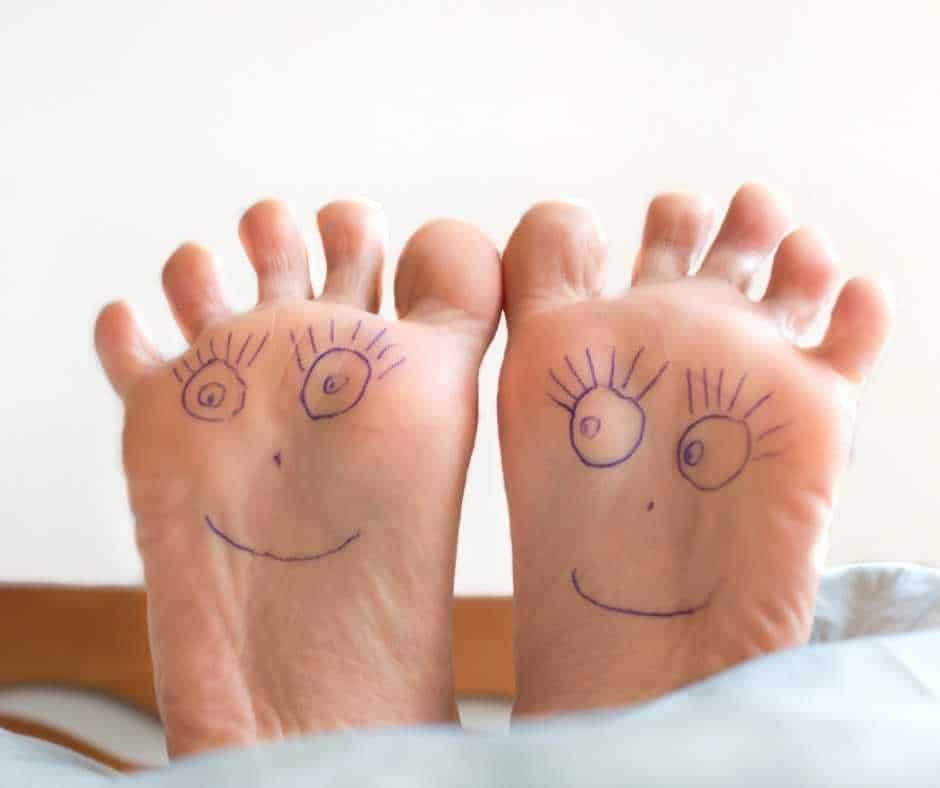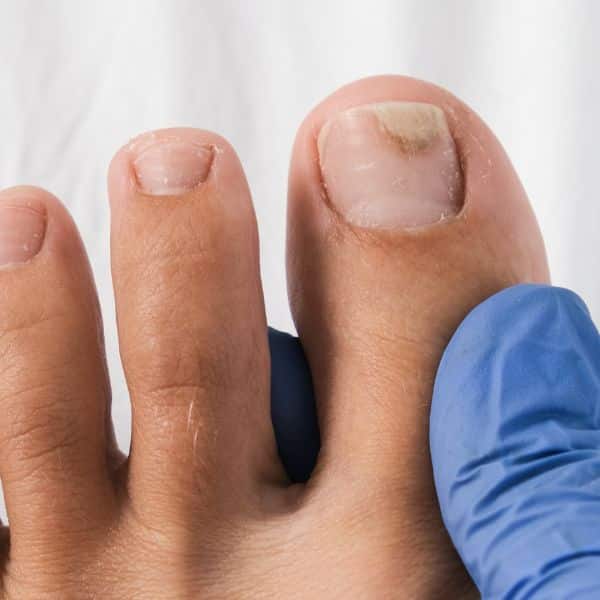Foot Callus Removal: All You Need To Know
A callus is an area of hardened skin which has been toughened due to repeated friction or pressure. They are usually caused by ill-fitting shoes (either too tight or too loose) which consistently rub against a particular area. To protect your skin, your body builds a thick layer of dead skin cells which prevents further friction – this is a callus. Although calluses are usually harmless, they can be unsightly and sometimes painful. Fortunately, foot callus removal is possible – here’s all you need to know.
At Home Foot Callus Removal
There are several home remedies that you can try if you have calluses. Remember – as with any at-home remedy – that if you experience any pain or have any concerns, you should see a medical professional.
Soak Your Feet
Using a solution of warm water and Epsom salts, you can try soaking your feet each evening. This will soften your skin and can help prepare your skin for other methods of removal. Epsom salts are particularly effective because they contain magnesium sulphate, which helps to exfoliate the skin and reduce inflammation. For added benefit, you can include other ingredients like baking soda or a few drops of essential oils such as lavender or tea tree oil, which have natural antifungal properties. Soak your feet for 15 to 20 minutes, allowing the warm water to loosen the callus. After soaking, gently dry your feet, paying attention to the areas where calluses are most prominent.
Try Exfoliating
You can use a pumice stone to gently rub the area (stop if there is any pain), which will help to lift away the dead skin cells. Exfoliating is a crucial step in callus removal, as it helps to gradually reduce the thickness of the hardened skin. Besides pumice stones, there are also foot files or electronic foot exfoliators that can be more effective for larger or more stubborn calluses. When using a pumice stone, make sure it is wet to avoid causing additional friction. Circular motions are best for smoothing the callus without damaging the healthy skin underneath. You can also get exfoliating creams for your feet – ask your podiatrist for their recommendations. These creams often contain ingredients like urea, salicylic acid, or alpha-hydroxy acids, which help break down the tough skin cells and promote regeneration.
Moisturise
After exfoliating, use a gentle moisturising cream which will soften and protect your skin. Moisturising is essential because it keeps your skin supple and reduces the likelihood of calluses reforming. Look for foot creams that contain hydrating ingredients like shea butter, glycerin, or lanolin, which are known for their deep moisturising properties. For an intensive overnight treatment, you can apply a thick layer of moisturiser and then wear cotton socks to lock in the moisture as you sleep. This can be particularly effective in softening calluses and improving overall foot health. Some specialised foot creams also contain additional ingredients like menthol, which can provide a soothing, cooling sensation, especially after a long day on your feet.
Prevention is Key
However, the best cure is prevention in this case. Because calluses are often caused by the shoes you wear, this is the place to start. Make sure your shoes are the right size (and it can be illuminating to get your feet measured as an adult!). Properly fitted shoes reduce friction and pressure points that lead to calluses. When selecting shoes, consider the shape and width of your foot. If you have wider feet, opt for shoes that offer enough room in the toe box. You should avoid wearing high heels or tight, pointy shoes, and instead, opt for wide, well-cushioned shoes. Shoes made from breathable materials like leather or mesh can also help prevent excessive sweating, which can exacerbate callus formation. You can also add insoles into your shoes to protect your feet even more. Orthotic insoles or gel pads can provide additional cushioning and support, redistributing pressure across your feet and preventing the hard skin from building up.
You should find that after wearing well-cushioned shoes for a while, your calluses will start to fade. In addition to choosing the right footwear, it’s important to maintain good foot hygiene and keep an eye on areas prone to calluses. Regularly moisturising and exfoliating your feet can prevent calluses from becoming severe and reduce the need for more intensive treatments.
Causes of Calluses
Calluses are areas of thickened skin that develop as a natural response to repeated friction, pressure, or irritation. Understanding the causes of calluses can help you take preventive measures to avoid them in the future. Here’s a detailed look at the most common factors contributing to callus formation:
Ill-Fitting Footwear
One of the most common causes of calluses is wearing ill-fitting shoes. Shoes that are too tight, too loose, or have high heels can create excessive pressure and friction on certain areas of your feet. Over time, this repeated pressure causes the skin to harden and form a protective layer, resulting in a callus. Pointy shoes, in particular, can squeeze your toes together, leading to calluses on the sides of your feet or between your toes.
Repetitive Activities
Engaging in repetitive activities, especially those that put continuous stress on your feet, can also lead to callus formation. Activities like running, walking long distances, or standing for extended periods can cause the skin on your feet to thicken as a protective measure. Even everyday actions like walking barefoot on hard surfaces or wearing sandals without adequate support can contribute to the development of calluses.
Foot Shape and Gait
Your natural foot shape and the way you walk, known as your gait, can also play a significant role in the formation of calluses. For example, people with flat feet or high arches may experience uneven distribution of pressure when walking or standing, leading to calluses in specific areas. Similarly, if you tend to walk with more pressure on the balls of your feet or heels, you’re more likely to develop calluses in those regions.
Certain Occupations and Hobbies
Certain occupations and hobbies that require prolonged standing, walking, or manual labour can increase the likelihood of developing calluses. For example, construction workers, nurses, and retail employees often spend long hours on their feet, making them more prone to calluses. Similarly, athletes, dancers, and hikers may experience calluses due to the repetitive stress on their feet during their activities.
Skin Conditions and Health Issues
In some cases, underlying skin conditions or health issues can contribute to callus formation. People with diabetes are particularly susceptible to calluses due to poor circulation and nerve damage, which can reduce sensation in the feet and lead to unrecognised pressure points. Additionally, skin conditions such as psoriasis or eczema can cause areas of thickened skin that may develop into calluses over time.
Inadequate Foot Care
Neglecting proper foot care can also lead to the development of calluses. Failing to moisturise your feet regularly, allowing dead skin to build up, or ignoring small areas of hard skin can cause calluses to worsen. Regular exfoliation, moisturising, and wearing the right shoes are essential to prevent calluses from forming or worsening.
By understanding these causes of calluses, you can take proactive steps to prevent them. Whether it’s by choosing the right footwear, adjusting your activities, or maintaining a consistent foot care routine, you can reduce the likelihood of calluses and keep your feet healthy and comfortable.
Foot Callus Removal From A Podiatrist
A podiatrist is a skilled medical professional trained in the diagnosis and treatment of problems with the feet and lower limbs.
If you have any pre-existing issues with your feet, or if you have diabetes, you should always go to your podiatrist rather than trying at home solutions. However, you can always make an appointment with a podiatrist even if you don’t have pre-existing conditions.
The podiatrist will be able to quickly and safely remove calluses, and they will give you advice about how to avoid getting more calluses in the future. They can also check your general foot health, and treat any other issues you have.
Booking An Appointment…
Booking an appointment for foot callus removal at Northwich Foot Clinic is quick and easy. Simply head to our online booking form and select ‘New Patient Podiatry’, or phone us on 01606 45077.
Our foot clinic is easily accessible for people across Cheshire and the North West, handily located in the centre of Northwich. Our experienced podiatrists are here to keep your feet healthy!





